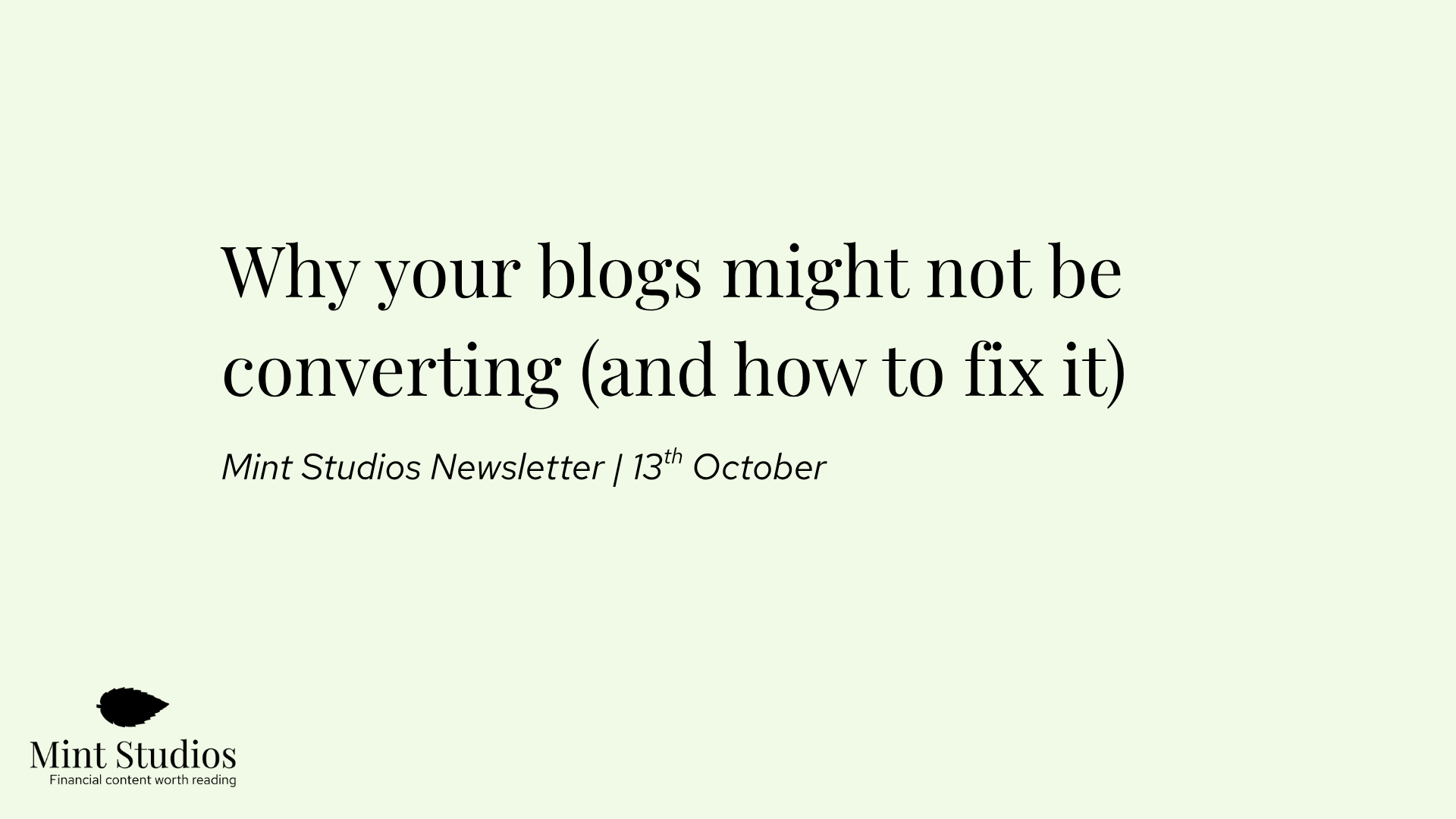High level results:
- 2.8x growth in organic inbound website leads
- 20% of monthly inbound website leads visit a blog post at one point in their journey
- Of all first/last touch leads via the blog, 43% were engaged
- Ranking on the first page for 45 key buying keywords
- Reached 360k impressions per month, with 95% through the blog
Situation: what Yapily needed
Yapily is one of the best known open banking providers in the UK. They are a Series B scale-up fintech, have won multiple awards for the best open banking solution in the UK and are trusted by industry-leading businesses like Google, Adyen, QuickBooks and Pleo. You won’t find a list of top open banking providers in Europe and the UK without it including Yapily.
There are quite a few open banking providers in this space, so we knew there would be competition when trying to rank for certain keywords – but there was definitely opportunity. We were able to properly identify the opportunity – even set a specific financial number to it – by first doing a 2 week Diagnostic. This allowed us to get a good understanding of the financial opportunity and what the strategy would be to execute on it, as well as what success would look like.
As Greg, Head of Marketing at Yapily says:
“Before working with Mint Studios, we struggled with a lack of bottom-of-funnel content. Our content wasn’t resonating, internally it wasn’t seen as valuable, and externally it didn’t meet the depth needed for our audience.
We operate in a complex, technical space (open banking), and much of our content was too high-level to make an impact.”
When it came to implementing the strategy, there were a couple of key factors we had to get right with Yapily:
- Going after the right keywords. Since we wanted to specifically grow the organic channel, it was crucial that we targeted keywords that would bring in prospects and customers. This meant not going after the typical “What is Open Banking” keywords and being a bit more strategic about the keywords we were targeting, which required having a good understanding of the open banking space.
- Getting content multi-touch attribution set up. The transition from Universal Analytics to GA4 meant we could no longer rely on Google Analytics to tell us whether content was generating leads. So we have to spend some time figuring out the best way to track results to ensure we were actually hitting our goals.
The results: increase in inbound organic leads, improved visibility amongst buying keywords and larger influence of the blog
Organic inbound website leads have grown by 2.8x, and the blog influences 20% of all inbound website leads
When we first started, Yapily was already generating a good volume of inbound website leads – largely driven by the brand awareness and authority built through previous PR activity. However, only a small share of those leads had engaged with the blog at any point in their journey, as the content hadn’t yet been optimised or surfaced prominently in search.
After 1.5 years of publishing conversion-focused content, the number of organic inbound website leads grew by 2.8x. Not only that, 20% of all inbound website leads in the past few months visited a blog post at one point in time, whether it’s first, multi, or last touch (we explain how we track this in the “How” section below).
Through Salesforce analysis, we could also see that these were quality leads that regularly turned into deal opportunities.
Because we were tracking multi-touch journeys through BigQuery, we could only see the number of leads and not the actual names of the companies converting. This meant we couldn’t see the lead information for all the leads we were bringing in, only some of them. Specifically, we could only see the first and last touchpoints through Salesforce (but not multi-touch), but this still gave us some valuable insight into how content influenced opportunities:
- Of the first / last touch leads from Mint blogs, 43% were engaged
- The total number of organic first / last touch conversions grew by 2.8x
The Yapily website ranks on the first page of Google for 94% of the target buying keywords
Yapily’s content has consistently ranked well, supported by strong domain authority built through previous PR and backlink efforts. This foundation allowed us to create blogs targeting high-intent, commercially relevant keywords with confidence that they would rank. As a result, out of the 48 keywords we’ve targeted, Yapily now ranks in the top three positions for over half of them (62.5% to be specific).

But most incredibly, Yapily is on the first page of Google for practically all the keywords that do matter (94% to be exact). These are not just random keywords. They are crucial to the business, such as:
- Bulk payment services
- Account information services provider
- Pay by bank API
- [Competitor] alternatives
These are both keywords that Yapily was already ranking for and we optimized for, and keywords that we targeted with new blog articles.
Because we were focusing on conversions and new customers, we cared more about targeting the keywords that move the needle rather than just targeting any keyword remotely related to what the company does.
That’s why it’s so important to look beyond “vanity” metrics like traffic or impressions. While broad, high-volume topics can generate strong visibility, they rarely attract decision-makers ready to buy. For instance, a blog titled “What is Open Banking?” might drive plenty of traffic, but it’s unlikely to reach Yapily’s ideal customers – the ones already exploring technical integration or partnership options.
By ranking high for key buying terms, not only did this enable more conversions, but it most definitely increased brand awareness for the Yapily brand in ways that are hard to measure.
Reaching 360k monthly organic impressions per month, with 95% of those impressions going to blog content
Even though we took a Bottom of the Funnel approach and only focused on content that really moves the needle, we still saw an increase in impressions by 160.2%.
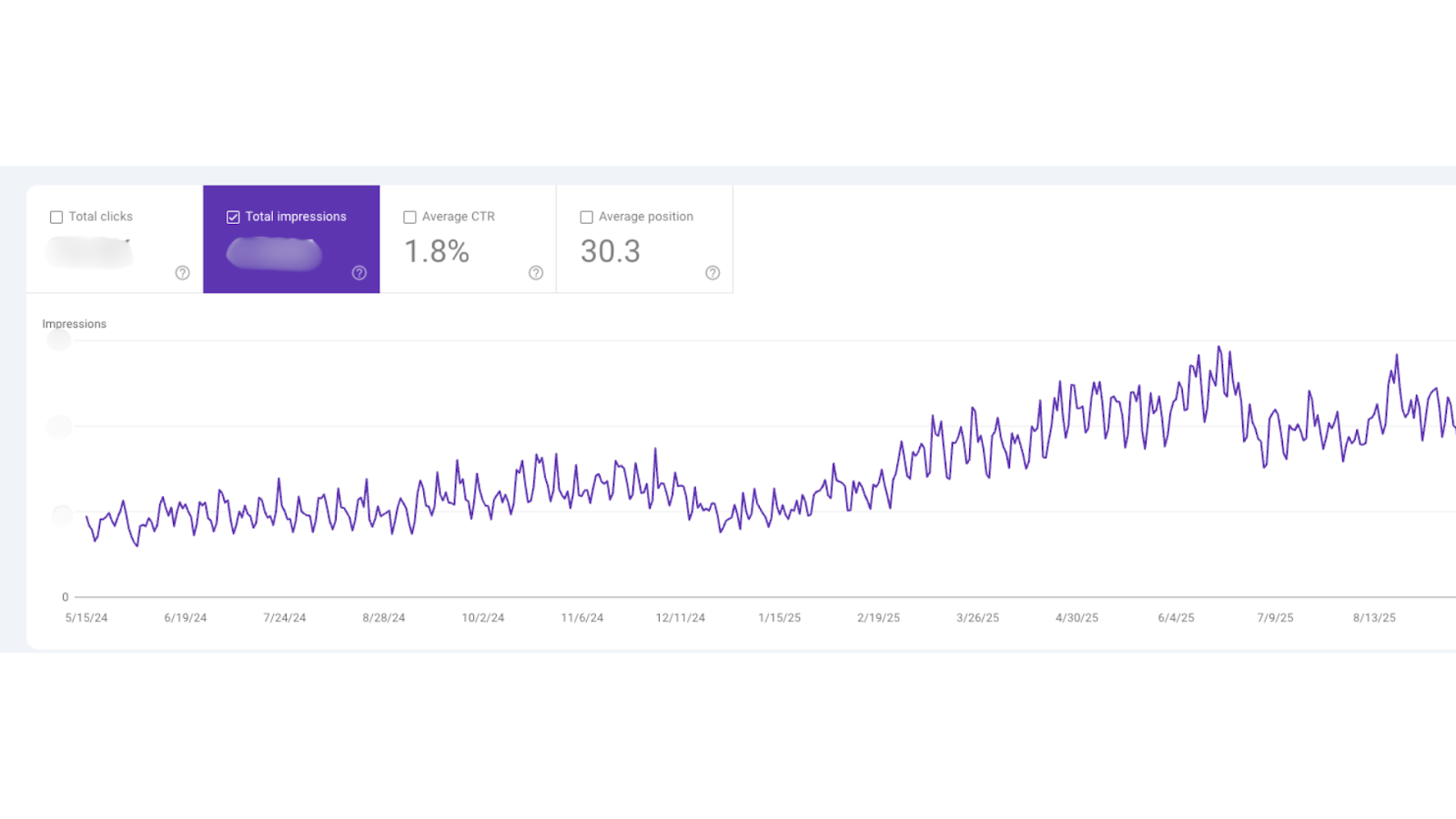
Like many other websites and companies, Yapily actually saw traffic decline over time – this is mainly due to AI Overviews reducing the number of clicks. Since we were always tracking conversions from the start and those were increasing, we knew not to worry about traffic decreasing.
And in fact, we believe a big reason conversions continued to increase while traffic decreased is because we were targeting the right keywords.

Here’s how Greg summarizes the results:
“Since partnering with them, we’ve seen a significant uplift in content quality, along with a clear increase in organic traffic and lead generation.
We also saw immediate results in terms of search performance, ranking highly for important keywords that matter to our business. This has helped strengthen our presence in AI chatbots, where visibility is increasingly driven by content quality and relevance.”
The how: BOFU content, interviews with experts, in-depth tracking and reporting
Focus on the commercials: BOFU content based on customer research
As per our framework, the key part of the strategy was to first focus on the commercial aspect. Since we were looking to reduce paid ad spend, it was crucial we target keywords that would acquire customers and not just bring in traffic.
To do this correctly, we first spent some time understanding what those key topics are. We interviewed salespeople on the Yapily team, did our own research and worked together with Yapily’s marketing team to select the best topics.
For instance, we created topics around problems that Yapily’s ICP was actively looking to solve. For instance:
- Pay by Bank API
- API for bank transactions
- Instant bank account verification
- Open banking for lenders
This allowed us to create a strategy that started with Bottom of the Funnel content – and later on we would move to Middle and Top of the Funnel content.

Read more: What is BOFU (Bottom of the Funnel) Content and Why Is it Important?
This strategy is what allowed us to get the results more quickly and bring in more qualified inbound website leads. We started by providing content for those prospects who were aware they had a problem and actively looking for an open banking solution.
Optimizing existing content and basing articles on interviews with experts
When we first started, Yapily had quite a bit of existing content but it wasn’t ranking high and not bringing in many conversions. As part of our work, we updated and optimized a lot of their existing content. This would be changes like:
- Making the intro more appealing by adding more of a hook, e.g. by actively addressing the problems readers may have.
- Updating the writing and subheaders to be more technical and advanced. This shows our reader that this article is written to their level, and it isn’t a cookie-cutter explainer. To do this and offer original insights at an expert level, we regularly interviewed Yapily SMEs.
- For example, our article Open banking for business accounts: what you need to know addresses a fairly niche and often underserved audience in the open banking space: businesses who want to offer open banking services to other businesses. We were able to fully understand the problems B2B businesses face by talking to an expert at Yapily.
- Including a section about the Yapily product. A lot of old SEO practices say you should never write about the product – but we’ve found that for BOFU content, writing about the product actually increases conversion rates. That’s because people at this level of the funnel are actively looking for information about features, benefits and case studies.
- Adding more CTAs throughout the article.
In-depth attribution and tracking set up with Looker Dashboard
Having a Looker dashboard with all the key information made it a lot easier to understand what is and isn’t working, and it helps inform our strategy.
At first, we tried doing the tracking with GA4, but it didn’t give us enough information as it would only allow us to track the total number of last touch conversions.
So we set up full-funnel tracking via BigQuery and Looker Studio. With our new set-up we could report on first, last and multi-touch blog leads:
- First touch: the first page visited was a /blog/ page
- Last touch: the last page visited before converting was a /blog/ page
- Multi-touch: at one point in the journey, they visited a blog post
Here’s a visual way to understand this type of attribution:
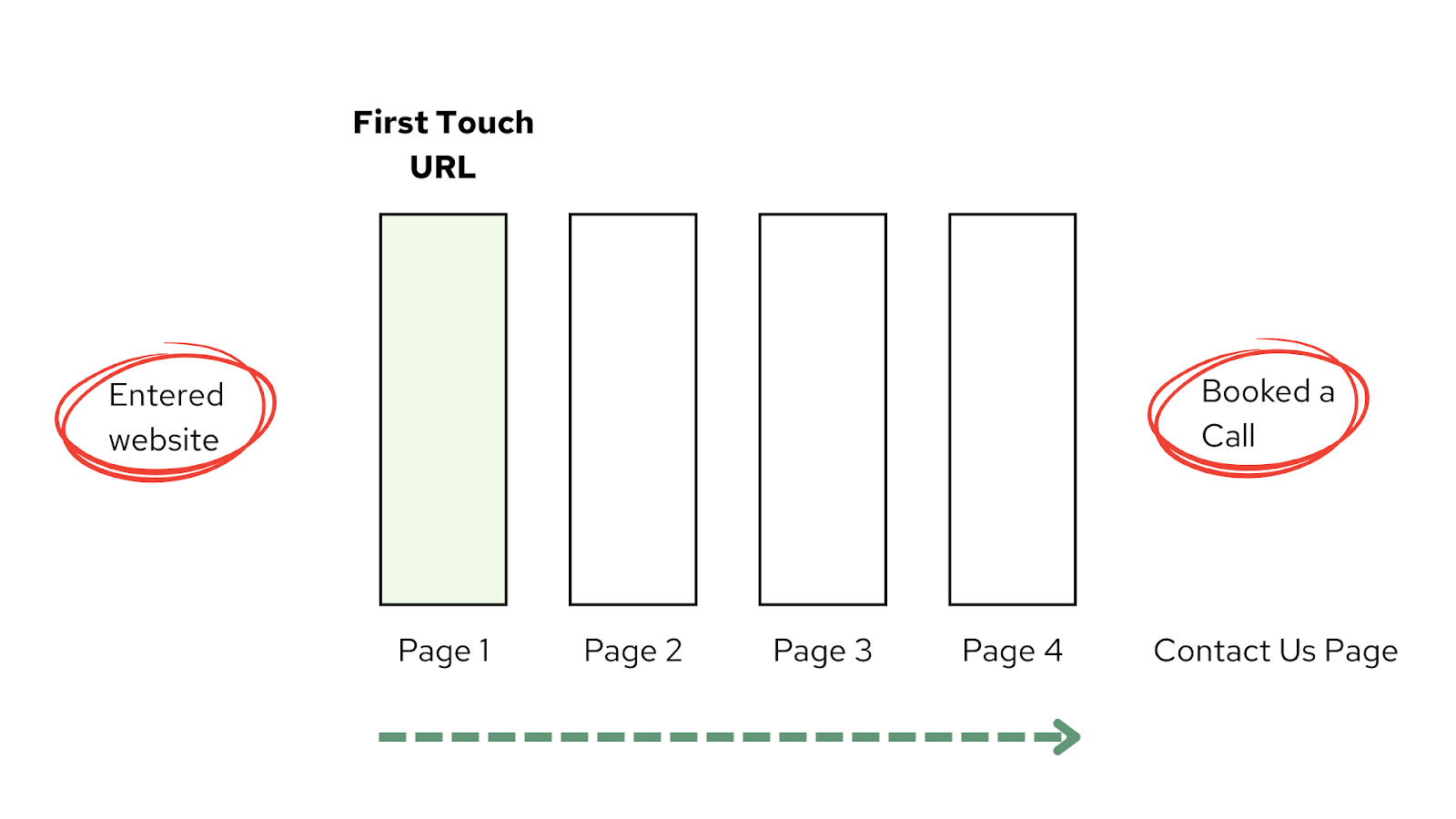
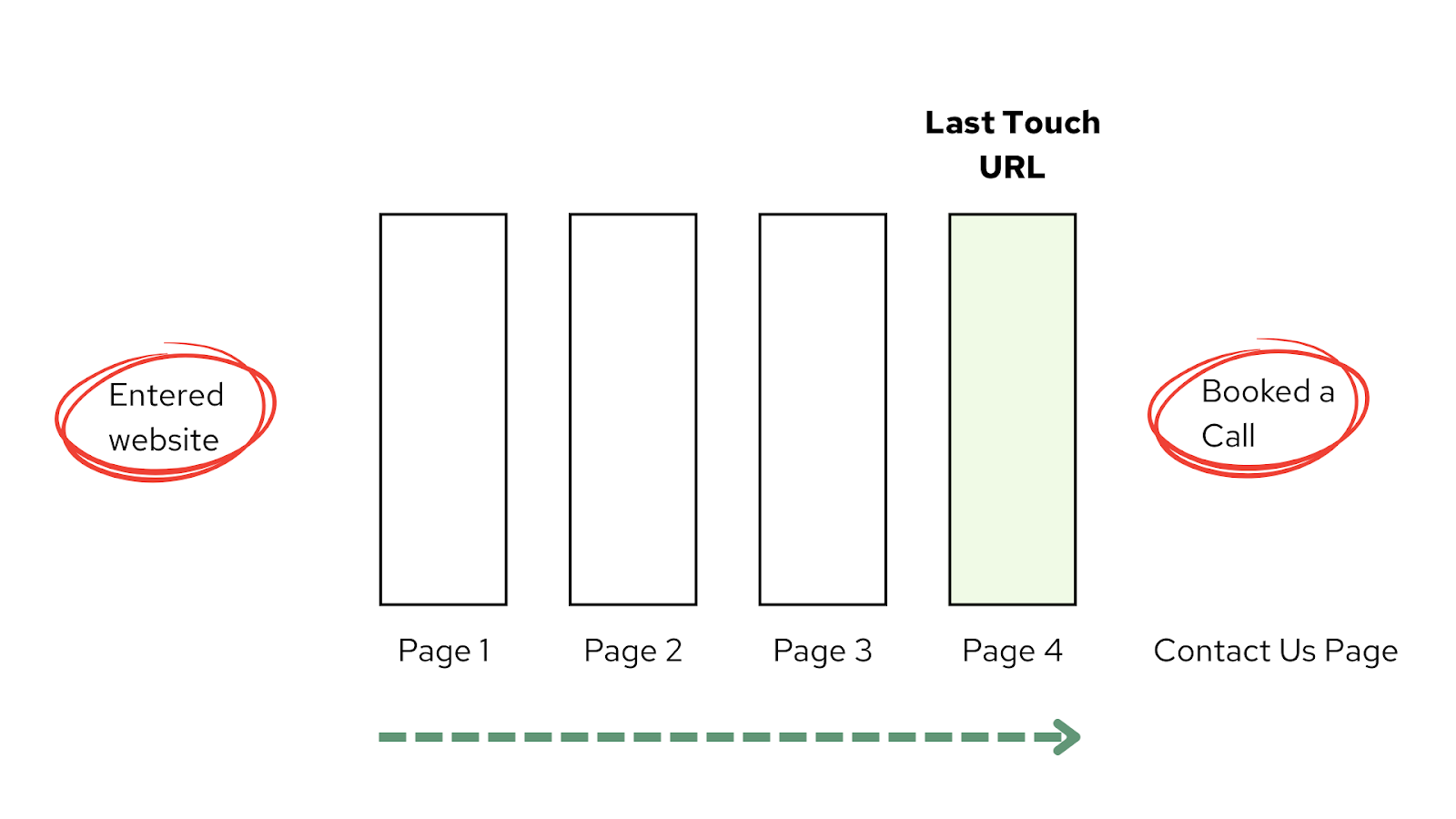
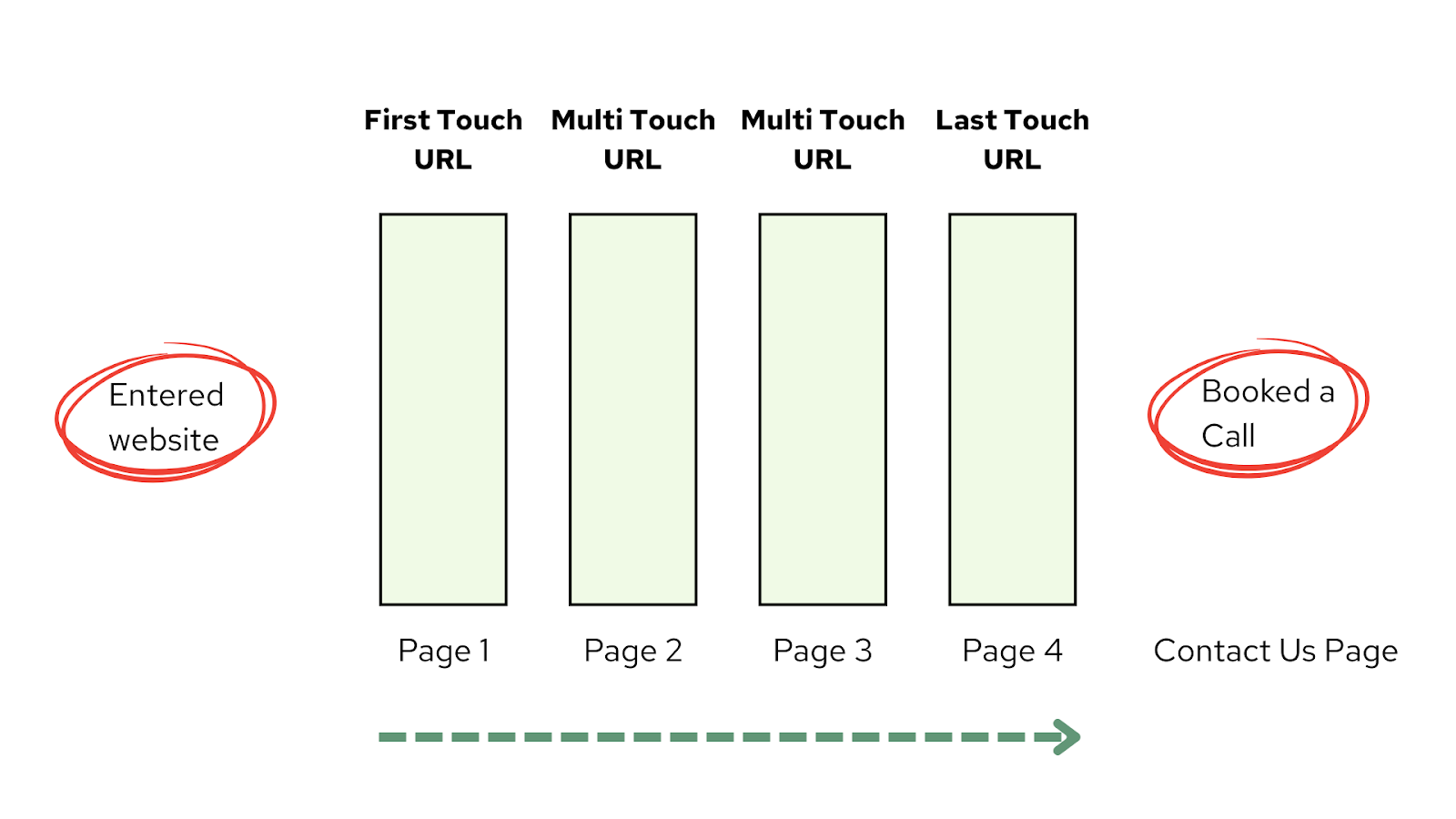
Multi-touch is especially crucial to track because it’s the most accurate representation of how content works. Especially in B2B financial services where sales cycles are longer and more complex, we knew that leads would often read a blog post at only one point in their journey. For example, a prospect might discover Yapily through a LinkedIn post, read a blog post on “Bulk payment services” midway through their evaluation, and only convert weeks later after further research and conversations.
With the new Looker set-up, we could track all this and also see the exact URL that the lead visited, allowing us to understand the topics that had the biggest impact.
Here’s what our Looker Dashboard covers:
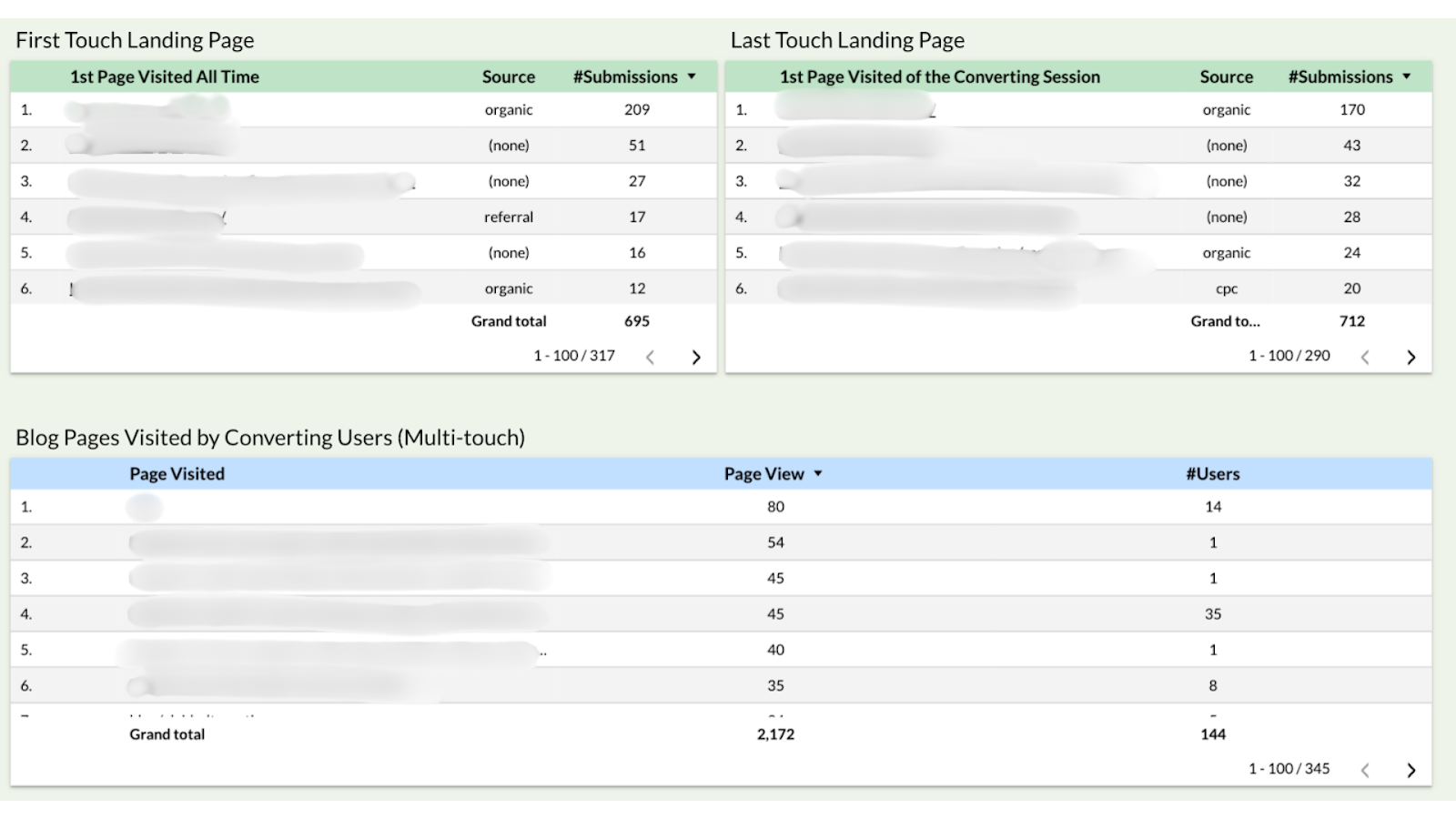
We also had access to a spreadsheet connected to Salesforce so we could track the quality of the inbound website leads (although only first / last touch), allowing us to connect and track the quality of some of the leads we were bringing on.
The key to results: Commercial focus, expertise and strong tracking
A key part of our success was having a commercial focus right from the start. We didn’t start by optimizing for traffic, as many other content strategies often do. Instead, our focus was clear: increase inbound website leads and acquire new customers, which we’ve been able to achieve successfully with Yapily. With solid tracking in place, we could also quickly also see which topics drove the results and adjust our strategy accordingly.
We’ll end with a final word from Greg:

Thanks to the amazing marketing team at Yapily for being fantastic to work with, we're excited to continue creating great content that drives results together.










